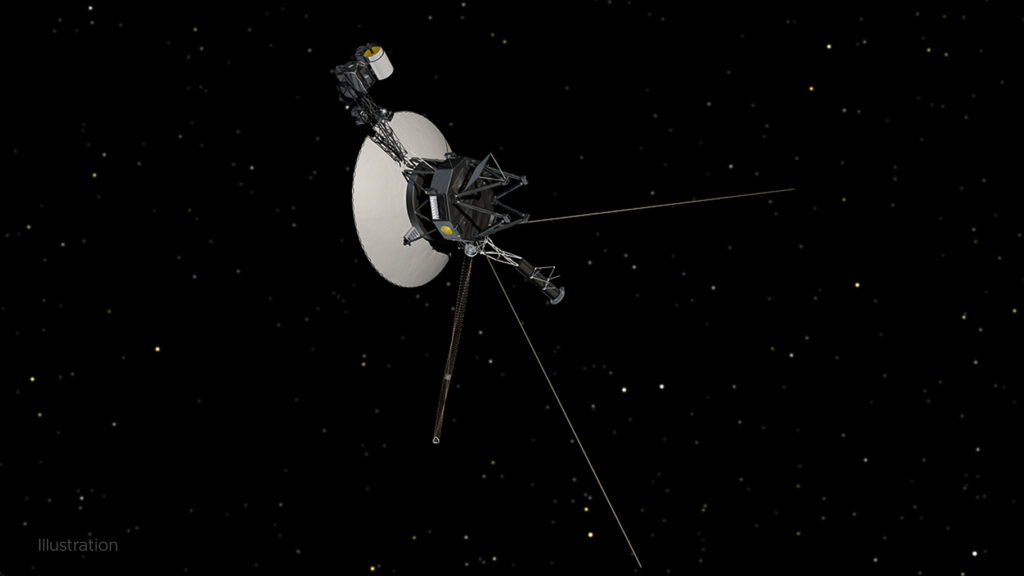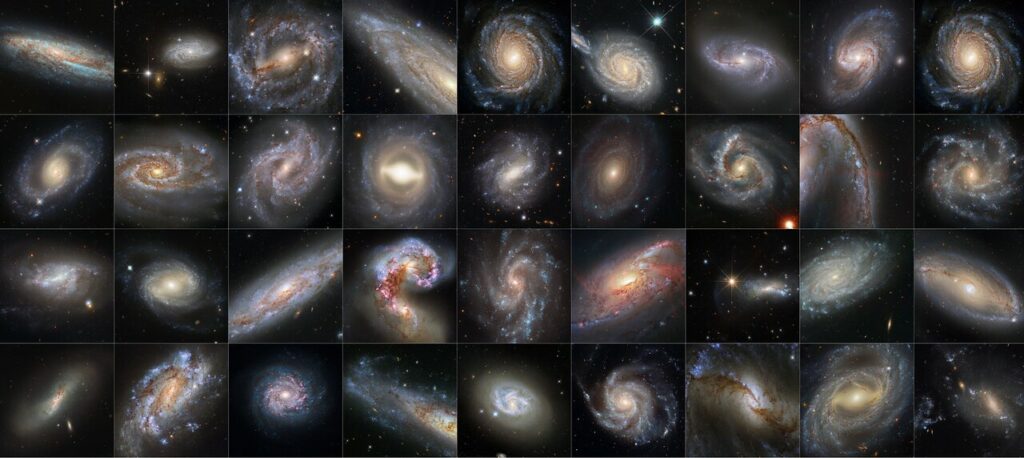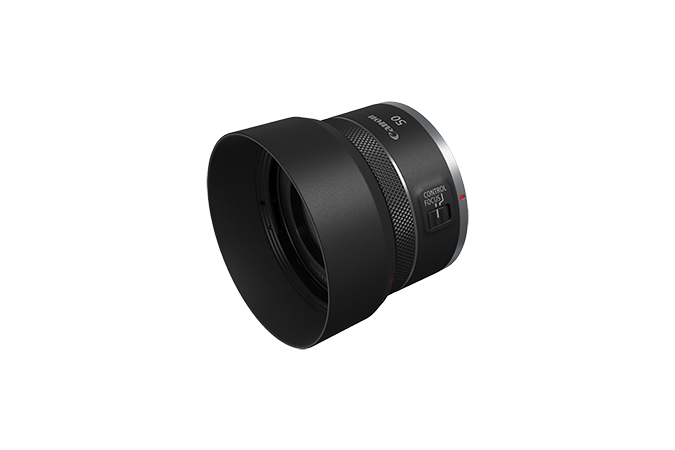Over the past three decades, astronomers around the world have been using the observations of the Hubble Space Telescope to more precisely calculate the expansion of the universe. And they have converged on a precision of just over 1%. Plus, Boeing launches Starliner, Voyager 1 struggles, and Erik reviews his favorite camera lens.
Podcast
Show Notes
Boeing Starliner heads toward space again
- NASA press release
- NASA Update on Orbital Flight Test Independent Review Team (NASA)
- What You Need to Know About NASA’s Boeing Orbital Flight Test-2 (NASA)
- OFT-2: Dual Engine Centaur returns to service for Starliner launches (ULA)
- VIDEO: NASA gives a briefing ahead of Boeing uncrewed Starliner test flight (Reuters)
Voyager telemetry beginning to deteriorate
- NASA JPL press release
Troubled ExoMars mission awaits fate
- Will NASA Save Europe’s Beleaguered Mars Rover? (Scientific American)
Hubble catches flashes and flickers to measure universe
- ESA Hubble press release
- NASA Hubble press release
- “A Comprehensive Measurement of the Local Value of the Hubble Constant with 1 km/s/Mpc Uncertainty from the Hubble Space Telescope and the SH0ES Team,” Adam G. Reiss et al., to be published in The Astrophysical Journal (preprint on arxiv.org)
Transcript
Pamela, Starliner finally launched again.
And everything worked?
Kind of. They are at least in a good orbit headed to the ISS.
That’s great. Unfortunately, Voyager 1 isn’t doing so hot.
At least it got to fly. There are continued concerns about a little Mars rover that might not.
Space. Is. Hard. In happier stories, we’re going to look at a new set of gorgeous Hubble images that help define the expansion of space.
That sounds cool. Oh, and I’ve got another lens review – this one is about my favorite lens, the Nifty Fifty.
That’s my favorite, too! I can’t wait to hear what you say.
All of this and more, right here on the Daily Space.
I am your host Dr. Pamela Gay.
And I am your host Erik Madaus.
And we’re here to put science in your brain.

On May 19th at 22:54 UTC, a United Launch Alliance Atlas V N22 rocket launched the Boeing CST-100 Starliner towards the International Space Station (ISS).
Starliner’s internal clock was right on time for the insertion burn this time, and the rendezvous so far has been nominal. It is scheduled to dock after a relatively quick 24-hour rendezvous and spend five days at the station. We’ll have a full update on the rest of this mission in next week’s show.
The N22 is a special variant of Atlas V with two solid rocket boosters, two RL-10 engines on the Centaur upper stage, and no fairing. The upper stage normally uses only one engine on the Atlas V, but the Centaur must fly a special flat trajectory to reduce reentry G loads on the capsule in the event of an abort on the ascent. This requires more thrust and thus two engines. Two engines are not an unusual configuration for the Centaur. According to ULA, all Atlas and Titan launches that used a Centaur from 1962 to 2000 were Dual Engine Centaurs, 167 vehicles total.
The Atlas V does not insert the Starliner all the way into orbit for a couple of reasons, mainly because it doesn’t have the performance with the need for the special depressed trajectory and also because it is preferable, operationally, to burn the propellant in the spacecraft’s hypergolic Launch Escape System prior to it reaching the ISS. The orbit insertion burn provides the opportunity to do this.
The first OFT mission 29 months ago was plagued by several near loss-of-vehicle events including insertion into an incorrect orbit and overuse of propellant. Both of these were due to an incorrect Mission Elapsed Time clock, which caused the spacecraft to think it was further along in the flight than it actually was.
Another serious issue could have happened with the service module potentially hitting the capsule before reentry due to a software error in the former’s disposal burn.

Finally, there were intermittent comms dropouts. The inadvertent contact between the service module and the capsule would likely have resulted in the spacecraft reentering with a damaged heat shield and possibly breaking up on reentry. The issue was only discovered when the vehicle was being reprogrammed on the fly in orbit due to the problems with the orbit insertion and propellant use.
OFT-2 was flown entirely on Boeing’s dime, to the tune of over $400 million, because of the problems on the previous mission. If you lined all of those dimes up edge to edge, they would stretch around the world over twelve times.
According to Boeing, the spacecraft is as close to the crewed configuration as possible. This will shorten the time needed to certify the spacecraft to carry a crew. The Crew Flight Test of Starliner with three NASA astronauts could be as soon as the end of this year.
So what has Boeing been doing during the 29 months since OFT-1?
The launch of OFT-2 was delayed several times in early and mid-2021 because of a number of problems, not all of them Boeing’s fault. One of those problems was the Russian Nauka module’s docking that moved the ISS out of its correct orientation, after which NASA wanted to be sure the station was ok.
That was only a small problem, however, because only hours before the next launch attempt on August 3, 2021, Boeing discovered that half of the valves in the spacecraft’s thruster system were locked up. They tried to repair the capsule at the pad but needed to take it back to the factory. This resulted in almost a year’s delay. The root cause of this issue, identified over the course of several months, was moisture infiltration in the valves that caused corrosion. Boeing eventually came up with a temporary solution involving other systems, not the valves themselves. This fix was implemented on the capsule that is in space now. A proper redesign of the valves is still on the table, for future vehicles.
Before we went live with this episode, an update about the spacecraft’s health came out. Two of the four OMAC thrusters – the big thrusters responsible for abort or final orbital insertion – failed during the orbital insertion burn. The still-functional RCS thrusters mounted outside picked up the slack, and the Starliner successfully made it into orbit.
And now for an update on a much older spacecraft.

NASA’s Voyager 1 spacecraft is still cruising along in the interstellar medium 23 billion kilometers from Earth. It’s not doing much; just coasting out in deep space. All of the instruments are still operating on the limited amount of power the probe can generate. This includes the high gain antenna, responsible for sending and receiving data from the spacecraft.
However, not everything is great. The spacecraft’s attitude control system is working, but for some reason engineers cannot yet explain, the telemetry the spacecraft is sending back makes it seem like it is out of control, pointing in impossible directions. The engineers know Voyager 1 is still pointing where it should be because the signal it is sending back has not changed in intensity.
One possible explanation for the bad telemetry is the spacecraft’s constant exposure to radiation from interstellar space. Radiation is not kind to electronics. Since the spacecraft is still working, engineers have time to fix it before it becomes an issue.
If they cannot, it might end up being one of the many issues engineers just have to deal with on the 45-year-old spacecraft. For example, the main thrusters stopped functioning well, so the team switched to the backup thrusters in 2017, operating them for the first time in 37 years.
Despite all these issues, Voyager 1 and 2 are expected to continue functioning through 2025.
In the meantime, some missions are having trouble just getting off the ground.
:focal(1079x649:1080x650)/https://tf-cmsv2-smithsonianmag-media.s3.amazonaws.com/filer_public/9b/da/9bdacdcb-1e5c-4049-9ff8-c3cd9d6f08e1/exomars_rover_pillars.jpeg)
ESA’s ExoMars rover, known as Rosalind Franklin, was first supposed to launch in 2018, but problems with the landing parachute during tests delayed the mission. Then, the mission was supposed to launch in 2020 now that the parachute problem had been fixed, but the panini prevented that launch date from happening. Finally, the mission was scheduled to launch this year; however, the entire ExoMars program was a joint effort between the European Space Agency (ESA) and Roscosmos.
And, well, Russia invaded Ukraine, much to the aggravation of the rest of the world, and the member states in the ESA voted to suspend the mission. For one thing, the launch vehicle was a Russian Proton rocket, and secondly, the landing platform was Russian-made. This situation is leaving much of the scientific community wondering if there is any chance of a good outcome for the rover.
It is possible that the U.S. can step in and save the mission, and NASA officials have confirmed that they are contemplating doing so, writing: We have recently begun a joint assessment of options for the ExoMars mission. Once we know more, we will incorporate that information into our plans.
It would be a shame to see this mission canceled after nearly twenty years of development and planning, but the reality is that we should prepare for bad news and hope for good news. We’ll keep you updated as the situation evolves.
Up next, we’ll go back to bringing joy with a look at a new Hubble collection of images.
Back when I was nineteen, I went home from college and told my parents I was switching majors from international relations – which was kind of a pre-law program – to astrophysics. There was much concern that if I didn’t become a lawyer or computer scientist, I’d end up unemployed. The standard arguments you’ve probably seen in TV shows and books ensued, and all those many years ago, when asked what I wanted to do as an astronomer, I said I wanted to be part of the Hubble Key Project and use variable stars to try and better understand the expansion rate of the universe.
While I never ended up becoming part of that great science program, I have continued to watch everything that it and its child research programs have produced, and now nearly thirty years later, the kinds of results we thought were a decade away are finally getting published.

Here is the background you need to know. There is a kind of elder star called a Cepheid variable that is easy to see at large distances and gives off a standard amount of light that is correlated with how fast it pulsates. If you see a star dimming and rebrightening over three days, you can look up exactly how much light it gives off, measure how bright it appears, and calculate just how far away it is with the same kind of maths your brain does instinctively to tell you how near or far away a motorcycle headlight is at night.
Cepheids exist in our galaxy, and missions like Gaia have let us use trig to survey their distances. Unfortunately, while bright, we can’t see them at a truly huge distance like we can supernovae.
Type 1a supernovae are also, generally, a very standard luminosity. They are just exploding white dwarfs that ate too much of their neighbors and one day hit a critical mass and exploded. These explosions all brighten and fade in a characteristic way, and if we can accurately measure the distance to a few of them, we can use them just like the variable stars, only to much greater distances.
In a special focus issue of The Astrophysical Journal, researchers led by Adam Riess look at the host galaxies of 42 Type Ia supernovae that were close enough for his team to resolve the Cepheid variable stars.
They used the variable stars to calibrate the luminosity of these supernovae and thus refine our measurements of distant galaxies. These results update our understanding of the expansion rate of the universe and yield a rate of 73.3 km/s per megaparsec (Mpc) with an error of just 1.04 km/s/Mpc.
This means that every three million light-years across volume of space is expanding by 73.3 km/s/Mpc, and we can expect our universe to double in size in ten billion years.
This is exactly the kind of science I wanted to do when I was nineteen and that I’m now glad I didn’t do because it is unexpectedly controversial, and research is hard enough without adding controversy.
These measurements look at how our universe has been expanding for the past several billion years and how that rate has been changing and extrapolate back in time to tell us the age of the universe and predict how the early universe should have been expanding.
But the early universe apparently didn’t read these results and decided it’s going to behave somewhat differently.
Using completely different techniques, researchers studying the cosmic microwave background come up with an expansion rate of 67.4 km/s/Mpc +/- 0.5 km/s/Mpc.
While 73.3 and 67.4 may seem like they are similar numbers, these two numbers are measured so accurately that this difference is really mind-boggling. It says there is something wrong with our understanding of how we got from the Big Bang to today. We are missing physics somewhere, and no one really knows where. A lot of “you must have errors in your measurements” and “you must have errors in your physics” phrases have been slung around. As an observer, I’ve had a theorist tell me my data was wrong because it didn’t match their theory, and I really didn’t enjoy that.
In this situation, these 42 supernovae in 42 galaxies with visible cepheids are here to say that the observations are right. We really do know how fast the universe is expanding. Now, we just need a new understanding of how it all started. And that remains a mystery.
And I’m really glad I’m not the one trying to figure any of that out.
It’s time for that lens review we promised earlier in the show.
Review

This week we’re going to take a look at one of my favorite lenses, the Canon RF 50mm f/1.8 STM, also known as the Nifty Fifty.
The RF 50mm f/1.8 is more or less the same as the EF 50mm f/1.8 STM but updated with the new RF mount and some slight tweaks to the optics.
Why many photographers use a 50mm lens is that the focal length approximates the angle of view of human vision, and the f/1.8 aperture is fairly fast, allowing you to have nice bokeh in the background to make your subject stand out while being useful in low-light situations. This makes it a good lens for not much money.
I bought this lens just before going on a trip where the main purpose wasn’t photography, so I had to fit everything I needed (camera, strap, battery charger, etcetera) in a small camera bag. Mounted on the Canon RP, I was able to fit the body with the lens attached but the hood reversed in a jacket pocket. It served me well on the trip.

The RF 50mm f/1.8 has the same combination control and manual focus ring found on other smaller RF lenses, like the 16mm f/2.8 and the 24-105 STM. Since getting my R6 I have found a new love for the control ring, as it allows me to use it as an aperture ring, instead of controlling the aperture through a dial on the camera body. It has only one switch that changes between focus and control functions. Despite the small size, it is still easy to hold.
Image quality isn’t bad, especially for the price, though my R6’s mere 20 megapixels are more forgiving. The only bad part is the corners are a little soft and there is some chromatic aberration, especially with branches, but the latter can be cleaned up by applying a lens profile in post-processing.
Another change with the RF version of the Nifty Fifty is a slightly higher magnification ratio of 0.25x compared to the EF version’s 0.21x. The RF 50mm can focus as close as 30 centimeters from the sensor. This increase in magnification ratio is a characteristic of several inexpensive RF lenses, including the 24-105 STM and 16mm f/2.8, and is the result of being able to place larger lens elements closer to the sensor in a mirrorless camera.

The one disappointing thing about this lens is its focus motor. The STM motor is loud as it focuses. I was honestly shocked at how loud it is, as between STM and USM focus motor technologies, the STM motor is supposed to be the quieter one. It is also slow to focus, particularly going from one end of the focus range to the other, and it occasionally focuses on the wrong thing, even if the target is stationary. This is particularly the case when in servo AF with eye plus tracking mode. The R6 has a fantastic autofocus system that is let down by this lens. Manual focus override can help though. There is a “movie servo AF” mode that promises to make it quieter for videos, but I did not evaluate this feature.
I would recommend this lens for anyone with an R series camera because it’s nice to have something with a large aperture for a relatively low price, even if the autofocus motor is a bit noisy. The lens is quite small, just 70mm long, and weighs a mere 165 grams. It can be bought new for $180 or refurbished for $130.
This has been the Daily Space.
You can find more information on all our stories, including images, at DailySpace.org. As always, we’re here thanks to the donations of people like you. If you like our content, please consider joining our Patreon at Patreon.com/CosmoQuestX.
Credits
Written by Pamela Gay, Beth Johnson, Erik Madaus, and Gordon Dewis
Hosted by Pamela Gay, Beth Johnson, and Erik Madaus
Audio and Video Editing by Ally Pelphrey
Content Editing by Beth Johnson
Intro and Outro music by Kevin MacLeod, https://incompetech.com/music/


 We record most shows live, on Twitch. Follow us today to get alerts when we go live.
We record most shows live, on Twitch. Follow us today to get alerts when we go live.